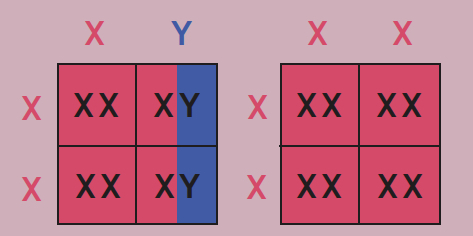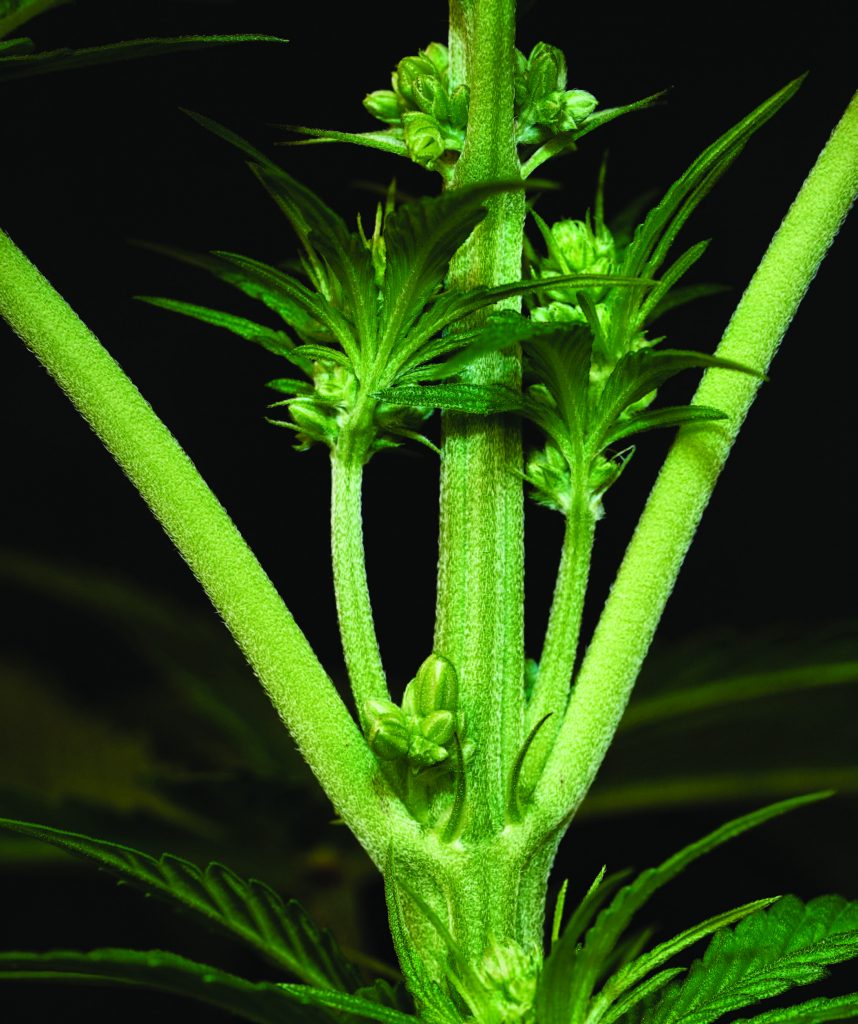Intersex Traits: Sex Expressions vs. Sex Genes
Sex Expressions vs. Sex Genes
In nature, plants have evolved to allow for a variety of methods of procreation
We are most familiar with dioecious procreation, or sexual reproduction involving two organisms with distinctly male and female organs. Additionally, monoecious plants, also referred to as hermpahrodites or bisexuals, posess both male and female reproductive organs, eliminating the need for a partner. Cannabis does not fit nicely into either of these categories. There are two reasons that cannabis will exhibit hermaphroditic traits: an extra chromosome (XXY), or through a combination of genetic disposition and environment.
Sex Genes: Cannabis’ sex expression is “controlled by an X-to-autosome balance system consisting of the heteromorphic sex chromosomes XY for males and XX for females.”1 When there is an extra chromosome, you have XXY, a hermaphrodite.
Sexual Expression: Plants that exhibit sexual traits not associated with their chromosomal makeup (Example: XX plant producing both male and female reporductive organs). Stress typically enhances these expressions.

A true hermaphrodite genetically is a plant that has an XXY chromosomal makeup, and its disposition will be to always produce both reproductive organs in any environment.
There are certain female plants (XX) that still can produce male flowers because of a genetic disposition, which is a condition that is prevalent in nature. A plant that expresses Intersex traits, but is not a genetic hermpaphrodite (XXY), is still prone to breeding these traits. Typically, in a female (XX) plant, these expressions are the result of an ethylene deficiency or distribution problem. Every growth node on a female plant needs ethylene. If a node doesn’t receive enough ethylene, it will begin to produce male flowers. Conversely, some plants over-produce gibberellic acid (responsible for male organ development, among other things). If a growth node is receiving a surplus of gibberellic acid, it will also produce male flowers. Truly monoecious cannabis plants—XXY plants with both male and female organs—are rather rare (between 0.1-1%).
Cannabis plants are predominantly dioecious; most are either distinctly male or distinctly female. But, in many cases, a female cannabis plant can exhibit male organs, including the production of fertile pollen, in spite of a lack of a male chromosome. 1,2,3
Rather, the expression of intersex traits is more likely the result of both the sexual stability of the parents and the environmental conditions. If the genetic tree is prone to sexual instability, it is reasonable to assume that its offspring have that potential expression. Certain types of stress will cause a plant to express differently, including the production of male reproductive organs (pollen sacks).
Even if a particular cut is stable, if its siblings exhibit sexual instability, it is likely that that trait will breed to some degree. If you hunt through a pack of 20 seeds and find one amazing plant but 19 that express intersex traits, that’s a great cut for cultivation, but as a breeder, it’s likely to significantly breed that trait. This also holds true for plants prone to stability. There are some plants in cannabis that can dramatically reduce sexual instability when crossed with unstable genetics. Cultivars like Durban and Jack Herer have shown great results for stabilizing sexual expressions.
Both genes and expressions breed. If a plant is showing sexual instability in all environments—for example, if it is throwing one male flower in the same spot on the plant every time—that expression is going to breed.
If your plants are displaying intersex traits, first, look for environmental stressors. Environmental stressors can include light leaks or time interruptions in the first three weeks of flower, improper CO2 levels (below 400 or above 1600 ppm), or a lack of ventilation or circulation. In some cases, nutrients can be to blame; look at root or veg stimulators, plant growth regulators, and plant growth retardants.
These are your most common culprits that aren’t genetic.

Early stages of a male plant. Photo by: Ascent 420
Sources:
1.Razumova, O.V., Alexandrov, O.S., Divashuk, M.G. et al. (2015). Molecular cytogenetic analysis of monoecious hemp (Cannabis sativa L.) cultivars reveals its karyotype variations and sex chromosomes constitution. Protoplasma, 253(3), 895–901. https://doi.org/10.1007/s00709-015-0851-0
2.Bond, C. (2018). Are Cannabis Plants Monecious or Dioecious? MaximumYield. https://www.maximumyield.com/are-cannabis-plants-monecious-or-dioecious/2/5095
3.Razumova, O.V., Alexandrov, O.S., Divashuk, M.G., Sukhorada, T.I., Karlov, G.I. (2016). Molecular cytogenetic analysis of monoecious hemp (Cannabis sativa L.) cultivars reveals its karyotype variations and sex chromosomes constitution. Protoplasma, 253(3):895-901. https://pubmed.ncbi.nlm.nih.gov/26149370/
4.Britannica, T. Editors of Encyclopaedia (2021, July 15). hermaphroditism. Encyclopedia Britannica. https://www.britannica.com/science/hermaphroditism